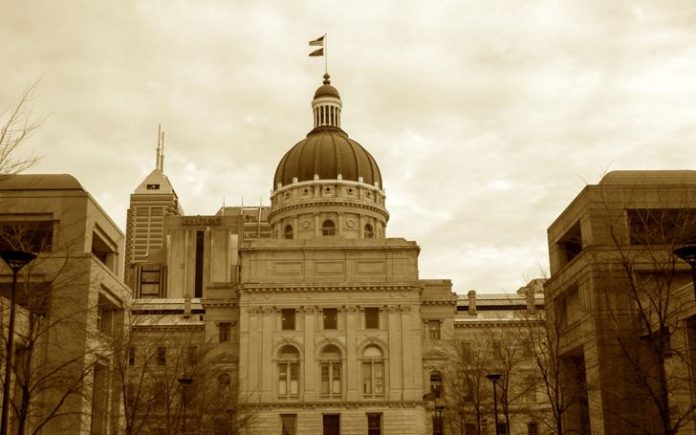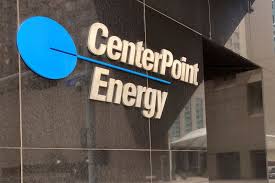CenterPoint Energy Assessing Damage, Performing Repairs, And Restoring Service Following Severe Storms
 CenterPoint Energy Assessing Damage, Performing Repairs, And Restoring Service Following Severe Storms
Evansville – June 17, 2022 – In response to the severe weather’s impact on its electric system in
southwestern Indiana, CenterPoint Energy has issued the following update:
During this storm, outages peaked with nearly 20,000 customers without power, with widespread damage to
the system resulting from high winds and lightning. CenterPoint Energy and contract crews are continuing to
assess and repair damaged equipment and downed wires
The restoration process begins with facilities vital to safety, health, and welfare, such as hospitals, water treatment plants, and public service facilities. After key facilities, the company follows its priority restoration process by making repairs to electrical facilities that will return power to the largest number of customers first, then continue the restoration process by prioritizing repairs to benefit the greatest number of customers until power is returned to everyone.
As of 2:30 p.m., there are 203 outages with 5,440 total estimated electric customers remaining without power.
Of those 203 outages, 8 outages remain for 100 customers or greater. Those 8 outages currently have crews working on restoration.
“We are committed to restoring service to our customers as safely and quickly as possible. We ask for patience as some areas received heavy damage to trees and equipment, which make it harder for our crews to access the area and make repairs,†said Richard Leger, Senior Vice President, Indiana Electric.
Leger added, “Our goal is to significantly reduce the number of outages by the end of the business day. However, due to the extent of damage, some customers could remain without power throughout the evening and into tomorrow. Given the extreme temperatures, we want to make sure customers plan ahead for their personal safety.â€
CenterPoint Energy reminds all customers:
Another Taxpayer Refund For Hoosiers
Another Taxpayer Refund For Hoosiers
by Wendy McNamaraÂ
JUNE 19, 2022
|
Hoosiers across our community and great state continue to feel the sting of record-high gas prices and inflation. To help, state lawmakers plan to soon return to the Statehouse for a special session to provide relief for taxpayers. House and Senate lawmakers are again voicing support to use state reserves to return $1 billion to Hoosier taxpayers via an automatic taxpayer refund after higher-than-expected revenue collections. Under the recently announced plan, each taxpayer would receive about $225, in addition to the $125 automatic taxpayer refund Hoosiers are currently receiving. Click here for more information on the potential refund. This year, legislators passed a historic $1 billon tax-cut package to reduce income taxes and Hoosiers’ utility bills. The state also returned $545 million to Hoosiers in automatic taxpayer refunds, and paid down $545 million in teacher pension debt. |
|||||
|
I look forward to joining my colleagues back at the Statehouse soon to provide some inflation relief and will continue to work on ways to get more money back into Hoosiers’ pockets.
|
|||||
FSSA Encourages Hoosiers To Participate In Survey To Measure Addiction Treatment,
INDIANAPOLIS – The Indiana Family and Social Services Administration’s Division of Mental Health and Addiction today announced the launch of the Recovery Capital Index, designed to measure the sum of resources necessary for an individual to initiate and sustain recovery from addiction and to help track the overall recovery capital of the state and communities.
“People in recovery have been telling us for decades that there is more to recovery than just maintaining sobriety,†said Jay Chaudhary, DMHA director. “A well-rounded, fulfilling life is the key to a thriving recovery. The Recovery Capital Index will help the state measure the quality of life for Hoosiers in recovery and ensure that Indiana remains a great place to recover.â€
Recovery capital is the overall measure of internal and external resources available to an individual with a substance use disorder to ensure their continual success in recovery. The RCI provides a comprehensive picture of a person’s whole well-being using an online, automated 68-question survey. Generally, the higher the level of recovery capital, the better the chances of someone maintaining success in recovery.
The state of Indiana has invested more than $45 million of federal State Opioid Response grant funding over the past four years to combat the drug epidemic and improve mental health. DMHA plans to use aggregate and geographically analyzed results from the Recovery Capital Index to drive future decisions about funding and resource allocation. Chaudhary said mapping and measuring recovery capital will also allow DMHA to see the effect of its investment and track it over time.
To complete the Recovery Capital Index survey, text “RECOVERY†to 833-638-3784. All Hoosiers are encouraged to complete the survey, not just those directly affected by addiction.
To help drive participation, Overdose Lifeline, Inc., an Indiana nonprofit dedicated to helping those affected by substance use disorder, will place stickers on over 200 NaloxBox units and 19 naloxone vending machines across the state. The stickers will prompt users to scan the QR code or text “RECOVERY†to 833-638-3784 to access the survey and additional information about naloxone, including training videos.
To find a naloxone distribution site near you, visit www.overdoselifeline.org.
DMHA has contracted with Commonly Well to administer the survey statewide. Commonly Well is a public benefit company that uses technology and data to help communities and organizations employ well-being initiatives.
June Is Homeownership Month
This week we’re sharing recommendations for potential homebuyers, as well as pitfalls to avoid. For more information on our homeownership programs.
Do: Keep track of your credit score. Your credit history and current credit score is a major qualifier for a mortgage. Free consumer websites are available to help track your credit.
Don’t: Expect that your lender will use the exact credit scoring models as consumer sites. Lenders utilize stricter credit scoring models than most consumers sites. Ask your lender what steps you need to take to improve your credit score.
Do: Seek pre-approval from one of IHCDA’s participating lenders if you are ready to pursue purchasing a home.You can find a list of our participating lenders.
Don’t: Go house-hunting prior to getting a mortgage pre-approval or without a licensed real estate agent. Getting pre-approval first will help you determine the budget for your home purchase, and a licensed real estate agent can help you navigate the current housing market.
Do: Save money for unexpected costs during the purchase of the home, such as home inspections and moving costs. Your savings will also help with the burden of an unexpected expense such replacing a water heater.
Don’t: Assume you need to put 20% down on the home. The most common loan types can require as little as a 3-5% down payment. Contact one of our participating lenders to get more information on the different options available.
Do: Maintain steady employment with the same employer. Loss or change in income can affect your mortgage approval.
Don’t: Make any big purchases on a credit card or finance a new line of credit during the process of purchasing a home. Taking on more debt can have a negative impact to your credit score and can affect your mortgage approval.
Spotlight Shines On Summer Camps And Programs At Vincennes University
|
|










